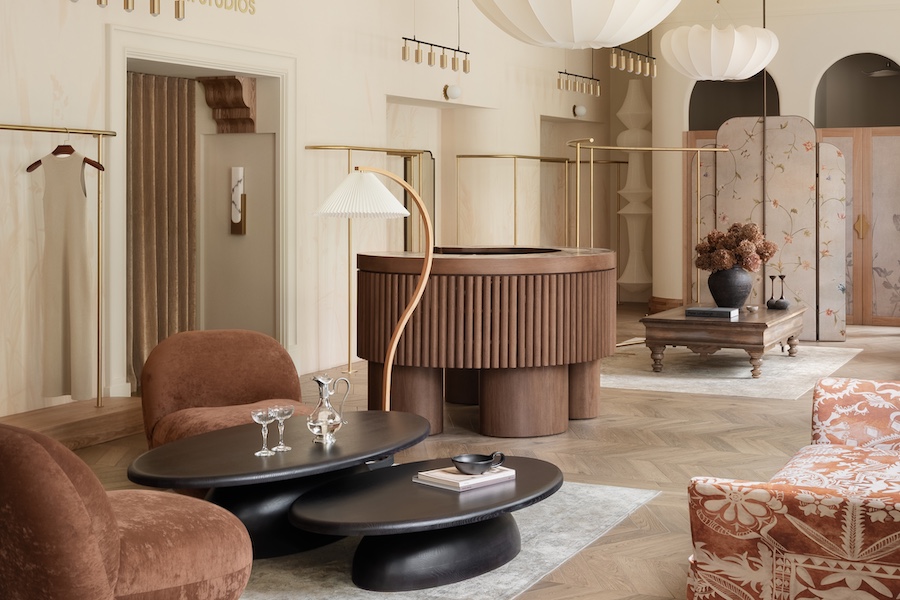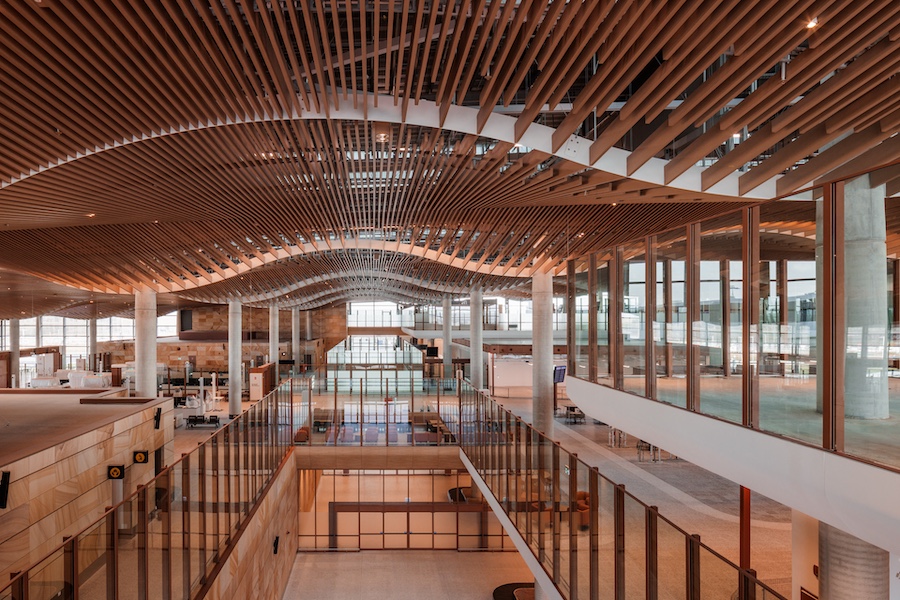The Berlin office of David Chipperfield Architects has completed the highly anticipated extension of Kunsthaus Zürich. Located opposite the existing museum on the northern side of Heimplatz square, the new building makes Kunsthaus Zürich the largest art museum in Switzerland. The clear geometric volume is conceived to serve as a natural extension of the outdoor square, as well as the new Garden of Art. “Our vision for the new Kunsthaus Zürich was to create an accessible and social place to enjoy art, rather than an exclusive temple for art,” says Christoph Felger, partner and design director at David Chipperfield Architects Berlin.
Complementary to the stone façade of the existing museum, the new structure is distinguished by an exterior accented by slender vertical fins made of limestone. Sawn surfaces are also embedded between the fins to evoke a contemporary ethos. An expansive entrance hall further contextualizes the newly created urban spaces, while a subterranean visitor passageway connects the extension to the existing Kunsthaus. Facilities including the café and bar, events hall, museum shop, and educational spaces are oriented around the entry hall, and artwork is showcased across the two upper floors. A calming palette and abundant daylighting characterize the exhibition spaces, and materials like marble, brass, and wood dress up exposed concrete found throughout the design for tactile impact.
“The project for the extension of Kunsthaus Zürich brings together the fundamental concerns of museum design with the responsibilities created by both the urban context and the relationship with the existing museum,” David Chipperfield says. “From the outset, we have sought to invest the museum with the physical qualities that enhance the experience of the museum visitor while considering the civic nature of the building and the institution. We hope that the quality of the architecture, its spatial, formal, and material resolution will guarantee that the extension, like Karl Moser’s original building, becomes an integral part of the physical, social, and cultural infrastructure of the city of Zurich.”



